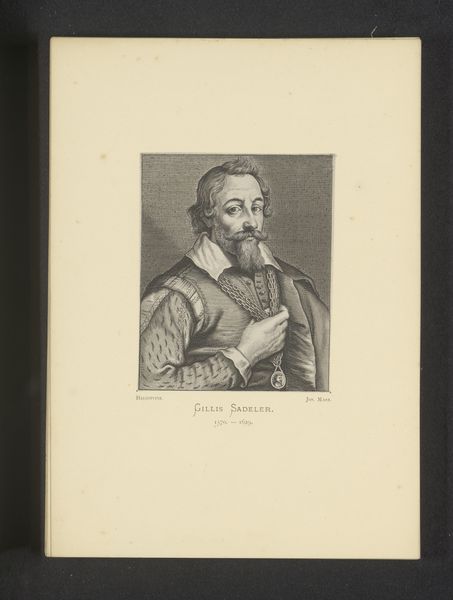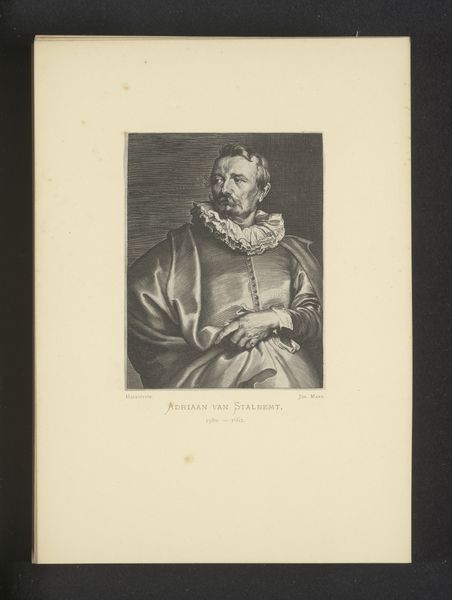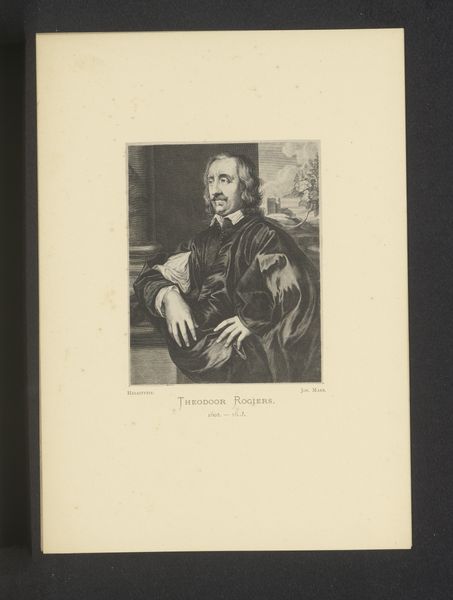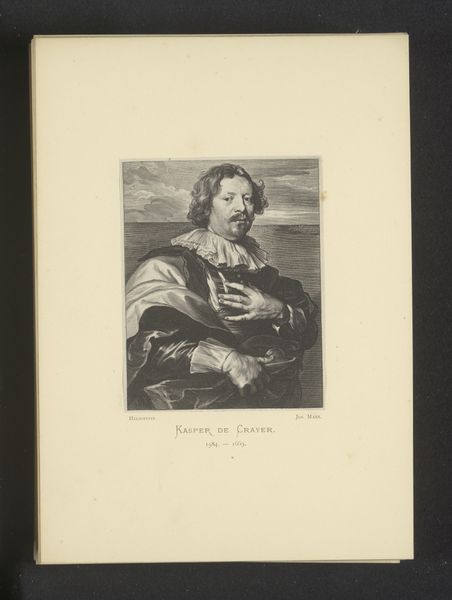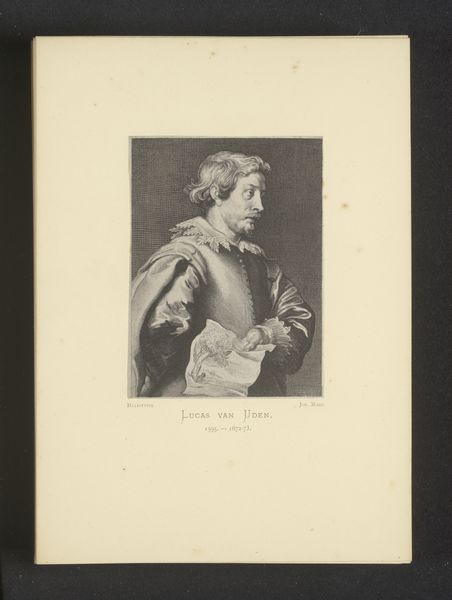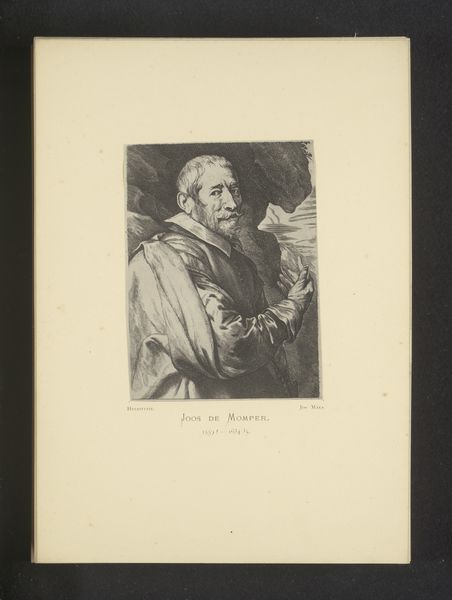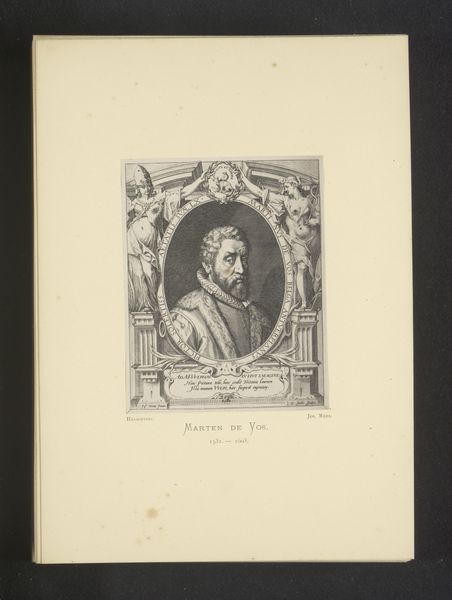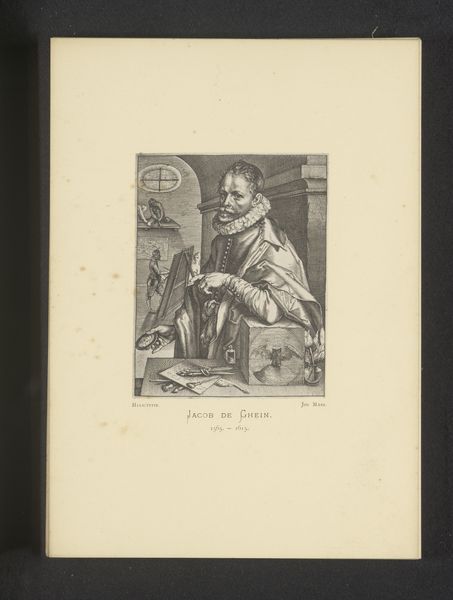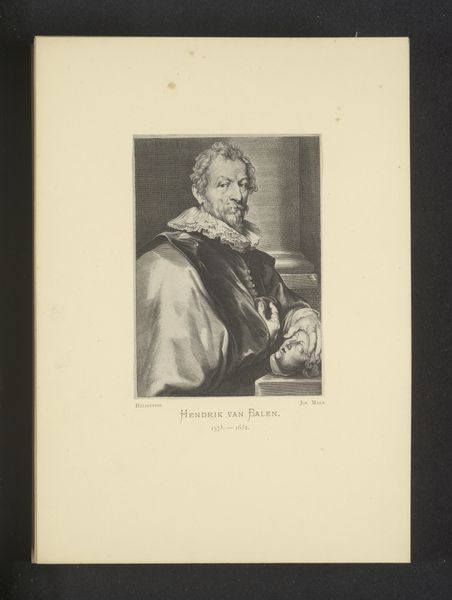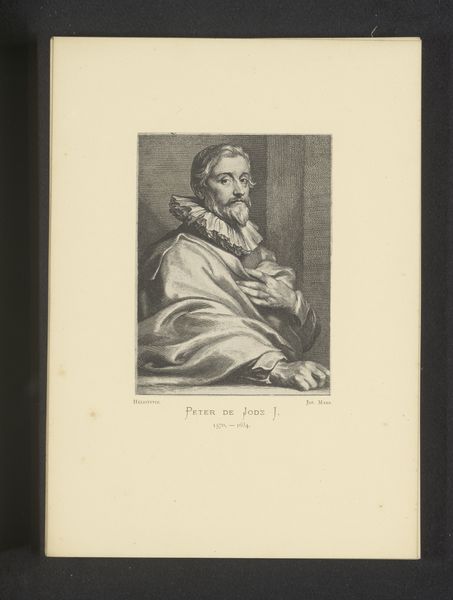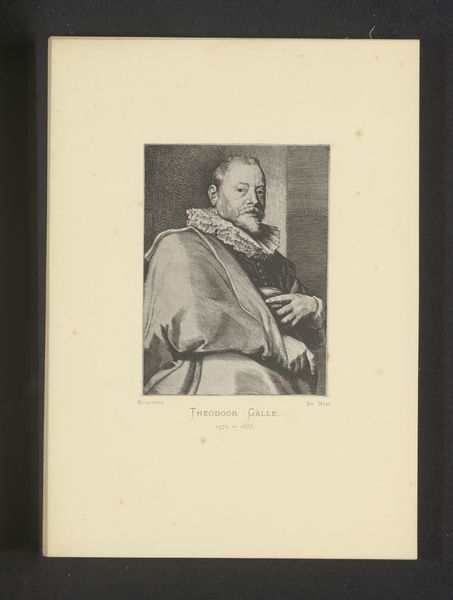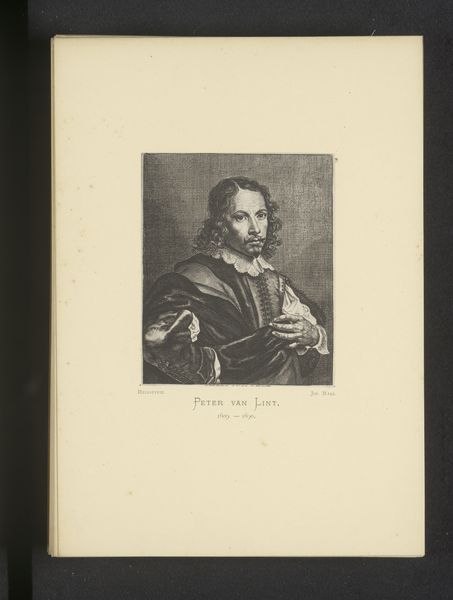
Reproductie van een gravure van een portret van Andries van Eertvelt door Schelte Adamsz. Bolswert before 1877
0:00
0:00
Dimensions: height 113 mm, width 90 mm
Copyright: Rijks Museum: Open Domain
Curator: This is a reproduction of an engraving of Andries van Eertvelt’s portrait, made by Schelte Adamsz. Bolswert. The print itself probably dates to before 1877, a glimpse back into the Baroque period. What’s your immediate impression? Editor: The sea behind him feels almost... ominous? Like a stage set for a tragedy about to unfold. Even though it's a portrait, it has that turbulent Baroque energy, a sort of heroic-melancholic vibe. Curator: I see what you mean. The maritime background and Eertvelt's gesture invite speculation about adventure. He seems to gaze optimistically forward. But there’s tension – a ship is present in the far background of the artwork’s scene, hinting at journeys. Van Eertvelt dedicated much of his painting practice to naval scenes. This artwork carries visual anchors to Dutch naval dominance. Editor: Anchors indeed! Those symbolic elements totally pull you in. A naval painter against a stormy sea, a scroll, possibly charts. One feels he's on the brink of some great expedition, some heroic artistic… voyage! But that serious expression… is it a quest or more like he's confronting fate? Curator: Given the period, perhaps both. Baroque art often explores themes of human drama played out against larger, often volatile, forces. Bolswert captured that in his rendering here, the way he balances the imposing figure of Eertvelt with a dramatic skyscape and ship speaks to both individual ambition and submission to nature. Notice his clothing; the sitter presents wealth, even though the medium itself offers muted black and grey hues. Editor: It's fascinating how much storytelling can be packed into a single image, especially through prints like this one, making art more accessible to people then. Each line etching meaning into the man's character – the weight of the world and maybe the thrill of creation etched right alongside. You get the sense this wasn’t just about recording a likeness, but immortalizing an archetype. Curator: Absolutely. These prints were vital in disseminating images and ideas, creating a shared visual language of heroism, success, and identity. Consider how it builds on established symbolism, adapting it for a new purpose. Editor: It’s a good reminder, art, in any form, carries echoes across time. Makes you wonder what symbols future generations will read in our faces. Curator: A worthy point on which to reflect. Thank you.
Comments
No comments
Be the first to comment and join the conversation on the ultimate creative platform.
